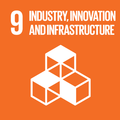Made from 100% recyclable materials, and with excellent thermal insulation properties, the Ytong Energy+ building block reduces CO2 emissions throughout its life-cycle.
The Ytong Energy+ building block is made for solid, load-bearing walls. It consists of aerated concrete with two different densities in a sandwich-like construction, combining a compressive, load-bearing layer with an effective insulation layer. While ordinary building materials allow the precious heat produced inside buildings to escape through the walls, Ytong blocks have a powerful thermal insulating effect – thanks to the trapped air pockets in the concrete – that helps save energy.
From production to shipment and disposal, Ytong Energy+ blocks form part of a closed cycle in which all materials can be reused or recycled if separated properly. Part of the rock flour from demolished aerated concrete is conveyed into the production process of new Ytong Energy+ blocks.
Why you should care
With concrete being the second most consumed substance on Earth after water, there is an urgent need to improve resource efficiency in its production and increase its reuse and recycling at the end of its life-cycle. Ytong Energy+ is Cradle to Cradle certified, with the blocks being manufactured using raw materials in a process where waste products, such as dust and condensation, are circulated back into the production process.
How the Global Goals are addressed

Industry, Innovation, and Infrastructure
The Ytong Energy+ block offers a more sustainable building material with improved insulating performance, helping to create more resilient and sustainable infrastructure and urbanization.
Responsible Consumption and Production
Cradle to Cradle certification ensures that the Ytong Energy+ blocks can be fully recycled or reused if disassembled correctly, helping to reduce demand for new resources.

Climate Action
These efficient building blocks fulfill passive house standards, meaning they are extremely efficient at insulating buildings, thus reducing energy demand for heating and cooling. This will ultimately reduce emissions from the buildings sector.



